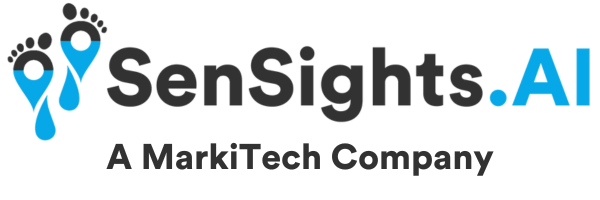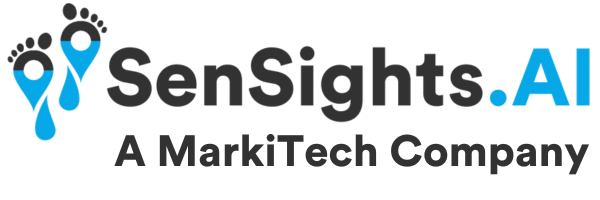
What is dementia
Dementia is a word used to describe poor memory, thinking, or decision-making that interferes with performing daily tasks rather than a specific disease. As far as dementia goes, Alzheimer’s disease is the most prevalent. Even though dementia primarily affects older persons, aging is not a natural cause. An estimated 5.0 million persons over 65 had dementia in 2014, which is expected to rise to approximately 14 million by 2060. However, numerous older people have survived dementia their entire lives. Age-related cognitive changes, stiffer arteries and veins, and weakened muscles and bones are all possible effects of normal aging.
People with dementia may have reversible underlying causes such as adverse drug effects, elevated brain pressure, vitamin deficiencies, and thyroid hormone (Thyroxines and Tri iodothyronines) imbalance.
Signs and symptoms of dementia
When neurons, or nerve cells, in the brain that were once healthy cease functioning, lose their synapses with other brain cells, and eventually die, dementia signs and symptoms develop. Since everyone loses several neurons as they become older, dementia patients lose a lot more neurons.
Early dementia warning signs and symptoms include the ones listed below.
- Being disoriented in a familiar area
- Not being able to recall names, places, or locations
- Forgetting the names of ordinary, everyday objects
- Difficulty remembering past events
- Failure to finish simple tasks independently
- repeating questions
- Using strange phrases to refer to everyday items
- Taking longer to complete routine everyday tasks
- Getting bored with regular daily tasks or occurrences
- Having hallucinations, delusions, or paranoia
- Impulsive behavior
- Disregard for the feelings of others
- Imbalance issues and difficulty moving.
Is dementia treatable?
The underlying cause of dementia affects the treatment strategy. Although there is no known cure for neurodegenerative dementias like Alzheimer’s, there are drugs that can help preserve the brain or control symptoms like anxiety or behavioral abnormalities. In addition, there is continuing research to create more therapeutic alternatives.
Risks for dementia
- Family history:
A person’s likelihood of getting dementia increases if they have parents or siblings who have dementia.
2. Poor health of heart:
If untreated, elevated blood pressure, high blood cholesterol, and smoking raise the risk of dementia.
3. Head Injury:
If they are severe or recur frequently, head traumas can raise the risk of dementia.
4. Ethnicity
African Americans are twice as likely as whites to get dementia as they age. In addition, Caucasian people are 1.5 times as likely as Hispanics to suffer from dementia.
How can we protect patients from adverse outcomes of dementia?
The psychological, emotional, and financial toll that dementia takes on individuals, their families, and medical professionals are tremendous. In addition, patients’ accessibility to dementia care and support was significantly curtailed by the global pandemic, which further increased their separation from carers and clinicians. Therefore, utilizing technological breakthroughs to enhance the well-being of those with dementia is urgently necessary.
Remote healthcare monitoring for those suffering with dementia is a successful method of assisting neurological tests and cognition testing. From the moment of diagnosis, remote health monitoring links people living with dementia with professionals. Providers can offer the carers individualized care and support strategies as the consultation progresses. Ways through which rpm is improving the lives of dementia patients are listed below.
1. Constantly in connection with care providers
Patients with dementia can communicate with their healthcare professionals through telehealth from the convenience of their own homes. Given that dementia patients typically rely on their carers to transport them to and from appointments, this is a significant benefit. In addition, telehealth can assist in managing dementia concerns at their place before a crisis occurs by providing cognitive education and care more accessible. As a result, the strain and stress on caregivers can be reduced, and the quality of life for those with dementia can be improved.
2. Service at home
Patients with restricted mobility or those susceptible to anxiety, agitation, or bewilderment in new situations may find the trip particularly exhausting. In addition, many patients who live in remote locations must endure taxing commutes merely to see a dementia expert once or twice annually. However, this geographic distance is no longer significant with the appropriate remote patient monitoring technology.
3. Wearable health monitoring equipment
People with dementia can receive regular reminders and messages from wearable health monitoring equipment. These reminders ensure that people take their prescribed medicine, participate in virtual therapy sessions, and answer questions in cognitive tests.
4. Location-tracking devices:
People with dementia may wander away from home and lose track of their destination or motivation. They might also have trouble identifying familiar surroundings, which increases the risk of their being lost or hurt.
Patients with dementia who may exhibit wandering behaviors benefit most from location-tracking devices. Knowing that RPM devices may track the whereabouts of their loved ones gives family members peace.
5. Keep patient records
Various connected home health monitoring tools, such as pedometers, glucose meters, pulse oximeters, peak flow meters, and blood pressure monitors, can continuously record a patient’s physical condition. Patients with dementia with other medical conditions can benefit significantly from this combination of data.
6. Careful monitoring of patients
The proper management of dementia requires close attention to the symptoms and suggested medications. The ideal approach to connect people living with dementia with skilled specialists — regardless of location and when needed — is through a remote healthcare monitoring system. Clinicians can comprehend patients’ difficulties at home. Thanks to ongoing observation. Based on these records, particular strategies’ symptomatic treatment can be tailored.
Sooner or later, in-person trips to the doctor or other experts won’t be totally replaced by telehealth services, but some families living with Alzheimer’s disease or related dementia may be able to use them to supplement their support network, and access specialized knowledge when needed, no matter where they live.
An exciting new period for dementia caregivers is being ushered in by telehealth advances. Telehealth technology help to address health disparities for families who live in rural locations or who otherwise cannot easily obtain care by addressing people in their homes.
SenSights.AI
We are a North American-based startup that provides comprehensive capabilities for home care organizations to manage their senior care services using state-of-art AI and 5G technologies and allow for a greater independence. We are uniquely positioned as we are the only one with a combination of
- Ambient or Touchless Fall Detection
- Deviceless or Contactless Wellness Monitoring
- Comprehensive Mobile, Tablet and Web Solution for Seniors, Caregivers and Agency
- Complete Out-of-box Telehealth and Telemedicine Platform with integration with over 15+ smart devices and several leading EMRs/EHRs like PointClick Care, Cerner and many more in pipeline
- Over 40+ Data Scientists, Engineers and Medical Advisors to help integrate and improve digital transformation journey of our client with services, products and platform focused on senior market
We provide the best in class health platform for patient engagement, remote monitoring and virtual care. Patients are guided on smartphones, tablets and computers from preparation through recovery with the help of reminders, education and activity tracking. Providers can receive alerts, monitor patients and access analytics to deliver better care. Health systems use SenSights Care to improve patient satisfaction while reducing hospital length of stay, readmissions, and costs.
We would like to work with you to help you grow your business with our unique business model of sharing revenue with healthcare providers.
Book a consultation today to see how we can help digitally transform your healthcare organization at https://sensights.ai/contact-us/
Learn more about our SenSights Care Solution on http://sensightscare.com/

